Airports, some of the busiest places, are now becoming unlikely hosts for bees. Not content with mechanical winged contraptions, airports all over the world, from Germany to the US, are stepping up their sustainability game and installing apiaries. Next time you’re down the airport concourse to your gate, stop for a second and look outside. You might be in for a surprise!
Buzzing airports
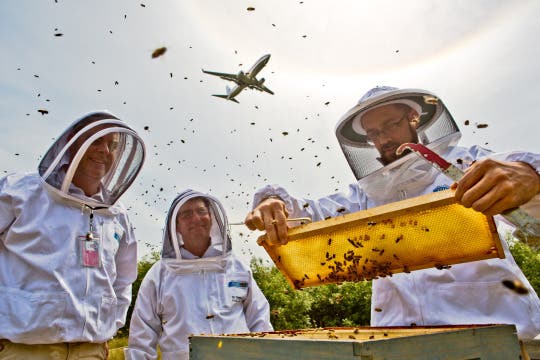
Flying is not only costly for your pocket, but also to the environment. It accounts for four to nine per cent of all global emissions – a disproportionate amount considering the number of people who fly versus those who drive, for instance. Low cost fairs and and an ever wealthier middle class coming out of developing countries mean there are more flights today than ever. Since 1990, CO2 emissions from international aviation have increased 83 per cent. Recognizing the part they play in the man-made climate change framework, the industry has take steps to curb its emissions and overall carbon footprint. Some solutions include using more efficient engines or new fuels like biofuel/jetfuel mixes.
Airports themselves are also taking steps in reducing their carbon print. San Diego was the first US airport to adopt a formal sustainability policy back in 2008, and in 2012, the oceanside airport, became the first in the U.S. to install LEDs on its runways, guard lights, and airfield signs. Other airports focus their sustainable efforts on conservation, like LAX. The airport has 307 acres of sand dunes voluntarily set aside as a nature preserve. Native plants and animals, including the delicate El Segundo Blue Butterfly (among the first insects put on the federal endangered species list back in 1976), are thriving again as part of this restoration project.
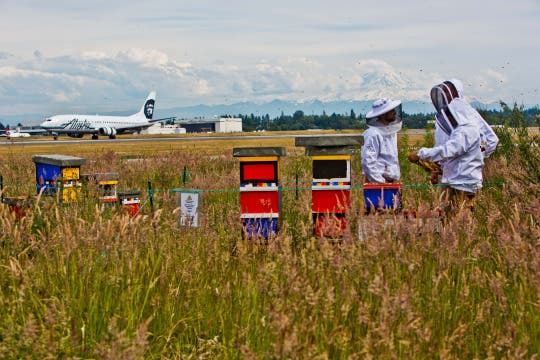
A popular trend among airports seems to be installing apiaries, odd as it may seem to some. The first to do so was Hamburg Airport in Germany in 1999, quickly followed by Düsseldorf, Frankfurt, Dresden, Hannover, Leipzig/Halle, Nuremberg and Munich. Inspired by their success, other countries followed like Malmo Airport in Sweden, Copenhagen, Chicago’s O’Hare, Seattle-Tacoma International and Lambert-St. Louis International.
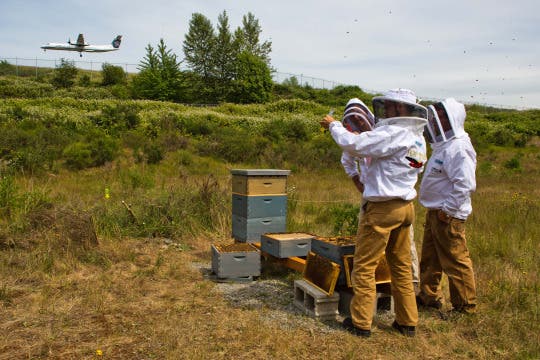
Bees thrive in urban environments where there’s flower diversity and no pesticides. At the same time, urban spaces are crowded and bees are left with little room to mass a proper hive. That’s where airports come in – they have plenty of space.
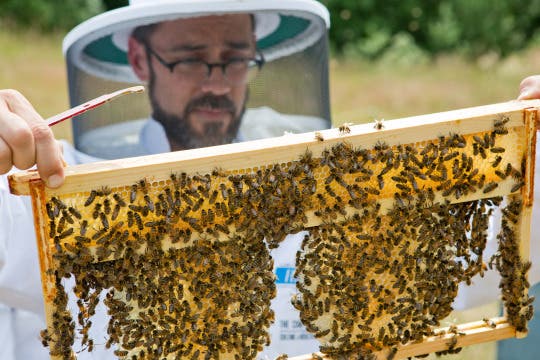
In May 2011, the Chicago Department of Aviation (CDA) installed an apiary of 28 beehives at O’Hare. The project was managed by Brenda Palms Barber, the founder and chief executive of Sweet Beginnings, a nonprofit group that provides job training to men and women recently released from prison. Today, the apiary has expanded to 75 beehives which are home to over a million bees. It’s the largest apiary at any airport in the world and the first major on-airport apiary in the U.S. Each year, the O’Hare apiary makes thousands of pounds of honey which it process on site and distributes it at O’Hare in the Farmer’s Market in the Terminal 3 Rotunda. The honey you buy at the airport is really made there. Amazing!
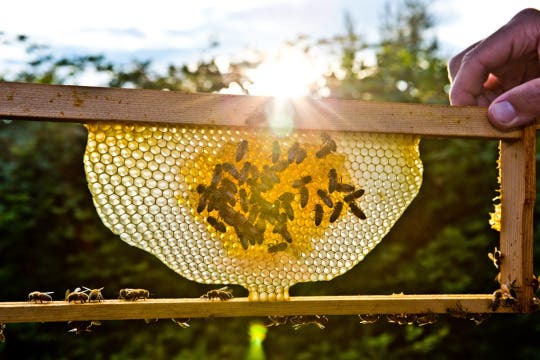
In Europe, airports are also using the beehives as biological sensors. Pollen and honey are analyzed and used as biomarkers for pollution. Malmo airport first began to do this in 2009 and has since reported that each year levels of heavy metals, volatile organic hydrocarbons and polyaromatic hydrocarbons are well below European Union limits.
But is it a good idea to keep bees at airports? They seem to like it and mind little of the noise. In all events, the beehives are typical placed a few miles away from the runaway. Oddly enough, a Delta flight departing Pittsburgh International Airport for NYC was delayed after thousands of bees swarmed to the plane’s body. The buzzing critters bumrushed the craft’s wing just as the plane’s crew was preparing to fuel it. The Pittsburgh airport does not have in fact an apiary, and the bees likely came from some place nearby looking for a new nest.
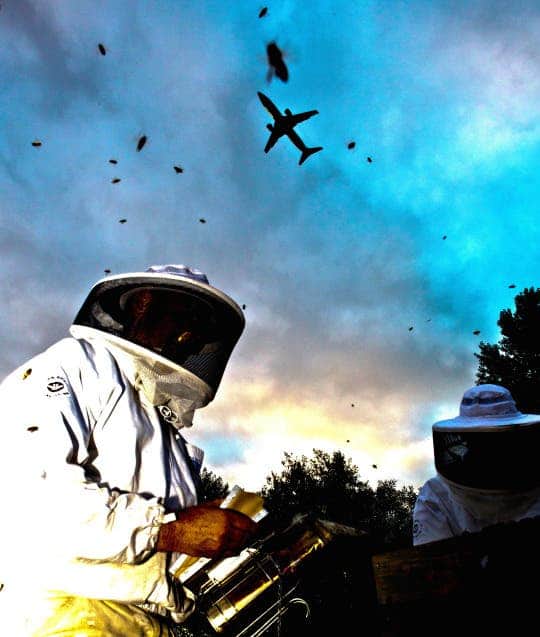
While airport apiaries might have little impact per se, they do raise awareness on an already troubled populace. In the past couple of years, bees around the world have been dying in great numbers. Each year, on average, there are 30% less bees, with the rate dwindling a bit in recent years. Though not yet entirely certain, environmental factors like pesticides, disease or habitat loss have been attributed to the massive die off, called colony collapse disorder.
If you’d like to learn more, check our this interview Science Friday made with Bob Redmond, a beekeeper and director of The Common Acre, which manages the apiary at Sea-Tac airport in Washington State.


